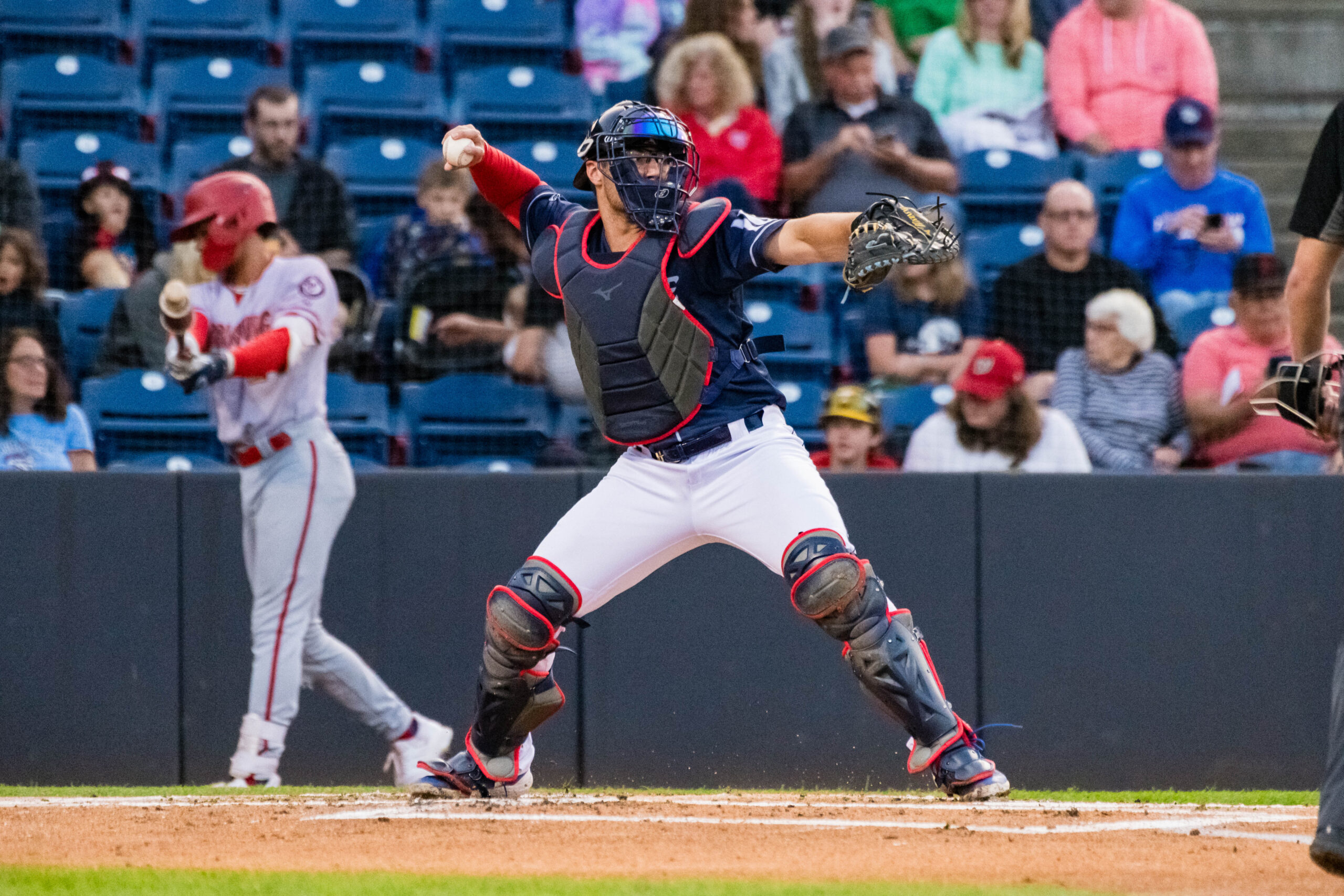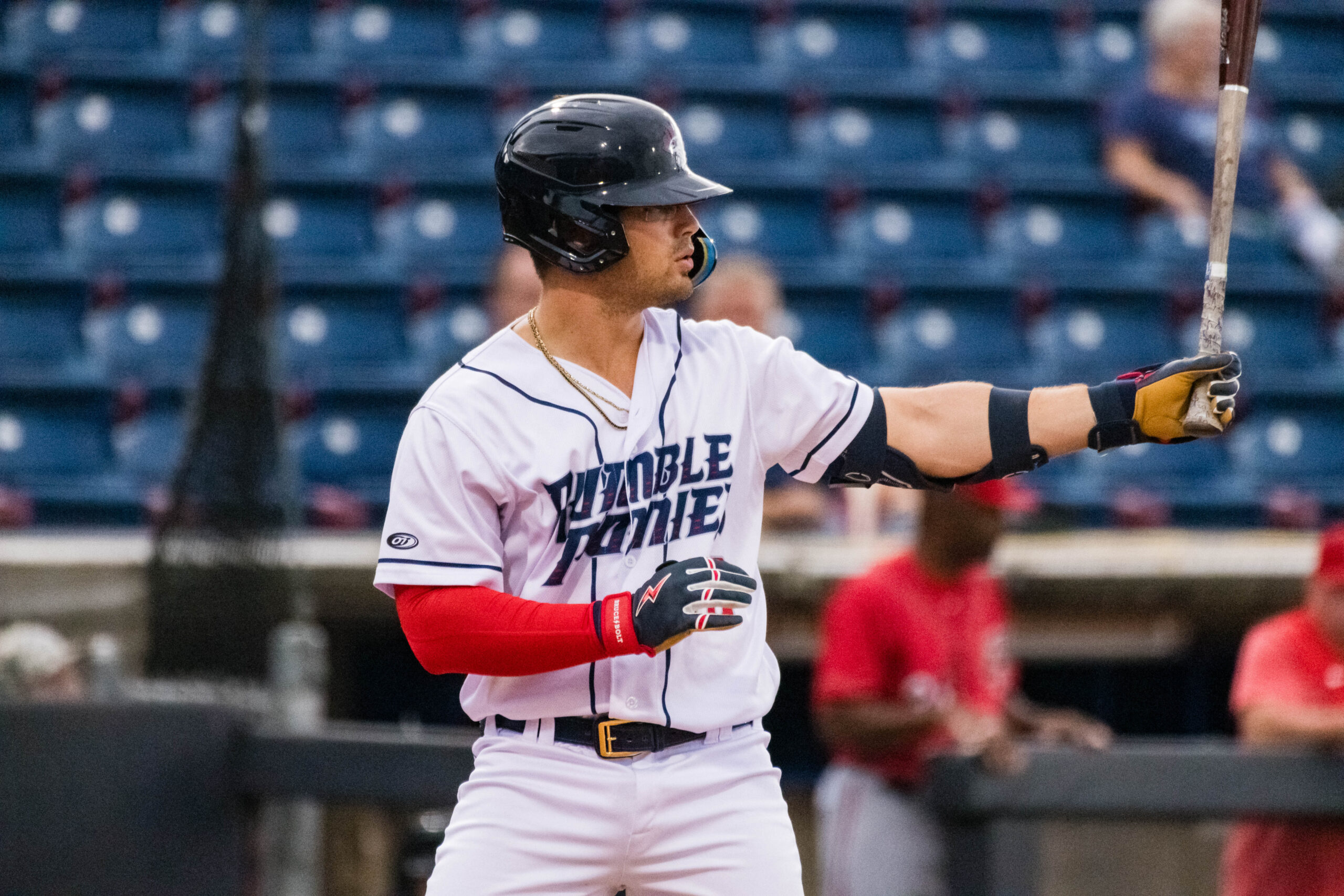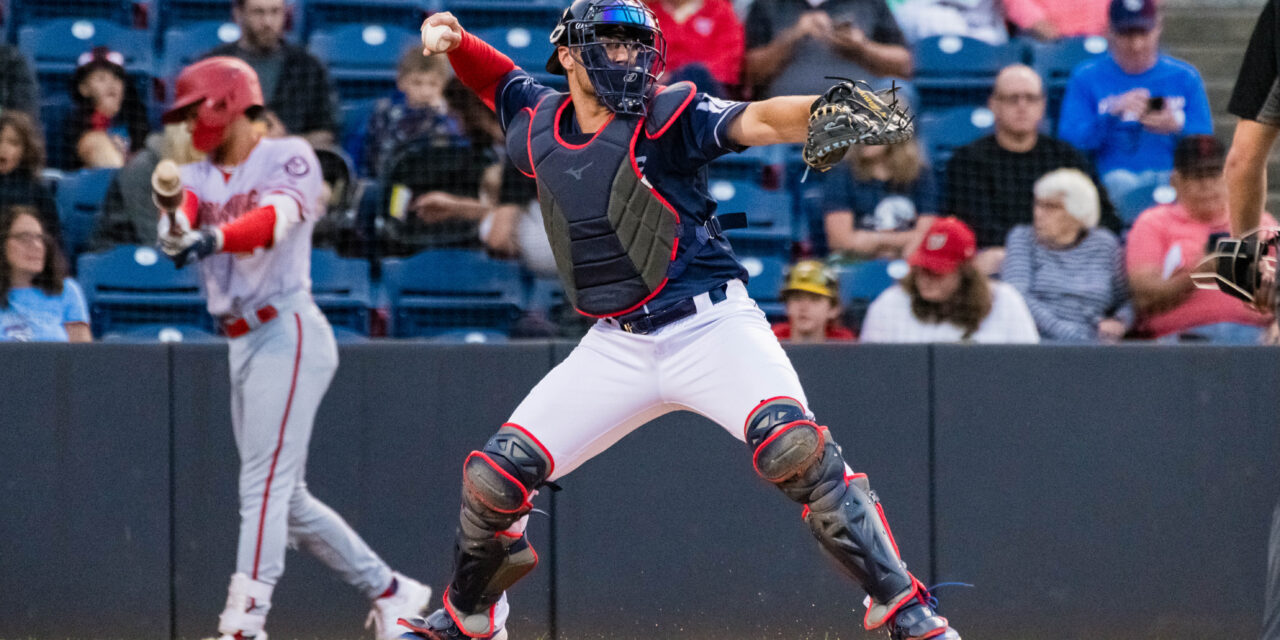No. 8: Kevin Parada, C
B/T: R/R Age: 8/3/2001 (22)
Ht: 5’11” Wt: 197 lb.
Acquired: 2022 June Amateur Draft – Round 1, Pick 11 (Georgia Tech)
ETA: 2026 Previous Rank: 3
2024 Statistics (Binghamton – Double-A) – 22 G, .167 BA, .536 OPS, 2 HR, 3 XBH, 8 R, 9 RBI, 0 SB 11/29 BB/K
Disclaimer: All prospects rankings were made in the preseason and have not been adjusted for play in 2024.
It has been an extremely rough go of it for a player who was once regarded as the New York Mets’ top prospect. Steadily, since his debut in the system back in 2022, catcher/designated hitter Kevin Parada has continued to fall on extremely tough times. The moment he got drafted it was projected that his defense would need to come a long way, and so much so that catcher was likely not his position of the future. Not only has that held true, but he has struggled so much at the plate, which is extremely troublesome given that was the main reason why he was drafted 11th overall.
The New York Mets originally selected the California-native with their first of two first-round picks during the 2022 MLB Amateur Draft. Before the draft, Parada was a consensus, fringe top-five pick (Keith Law, MLB.com, Fangraphs, and ESPN all rated him inside the top seven). However, he miraculously fell to the Mets at 11. To ensure he signed with the team, the Mets paid $239,035 over-slot value.
After a sensational high school career, the now 22-year-old Parada slashed .341/.420/.636 to go along with a starling 1.056 OPS across a two-year tenure and 478 at-bats in college at Georgia Tech. During his final season with the Yellow Jackets, he led the best offense in the Atlantic Coastal Conference and, as a result, was a unanimous first-team All-American. Parada was also recognized as the nation’s best catcher via the Buster Posey Award (formerly known as the Johnny Bench Award).

Kevin Parada. Photos by Bronson Harris of Binghamton Rumble Ponies
As a result of his terrific collegiate career, he was drafted 11th overall by the Mets in what several deemed a “steal” at the time. He then finished the season split between the Florida Complex League and in Low-A ball with the St. Lucie Mets. He performed well in an extremely small sample size, slashing .275/.455/.425, good for an .880 OPS, across 40 at-bats split with both teams. He struck out only one more time than he walked and ended up winning the league title with St. Lucie. However, since then, he has been on a steady decline.
The following year, in his first full professional season with the Mets, Parada spent a majority of his time with two different teams within the system. He began the season with High-A Brooklyn, where he mustered a respectable .787 OPS across 340 at-bats. Parada slugged 11 home runs and totaled 36 extra-base hits to go along with 42 RBIs. However, this is where his strikeout problem started rearing its ugly head. Parada posted an above-average 25.1% strikeout rate and walked a below-average 7.9% of the time.
Parada was then called up to Double-A Binghamton toward the end of the season, where he struggled mightily across 60 at-bats. He hit a woeful .185 and posted a meager .639 OPS. Parada struck out an extremely troublesome 38.3% of the time and owned a walk rate below 7.0%. His wRC+ dropped from 115 in High-A in 2023 to only 70, with Brooklyn to end the year in 2024.
Not only was his bat, which is why he was drafted so high, very troublesome in 2023, his defense was worse. Parada allowed a staggering 129 stolen bases across only 72 games, posting a caught stealing rate of only 18% (for comparison’s sake, the MLB average caught stealing rate is 31%). Those defensive issues carried into the Arizona Fall League (AFL) and followed him into this season with Double-A Binghamton. In the AZFL, he allowed 36 stolen bases while only throwing out five runners (12% caught stealing rate). Meanwhile, in 2024, he has allowed 21 stolen bases, throwing out only three (13% caught stealing rate).
Of course, controlling the run game is not the only job of a catcher, but it is a very important one. Every indication points to the projections pre-draft that the catcher position is not feasible for Parada as his career goes on. He already started seven of his 22 games played this season in the designated hitter spot. Besides catcher and designated hitter, he has not started at any other position during his tenure in the Mets’ organization. Would first base be more feasible?
Unfortunately, like the defense, the bat has been once again very troubling for Parada in 2024. So far, through 78 at-bats with Double-A Brooklyn, Parada owns a .167/.280/.256 slash line. His .536 OPS is on track to be the lowest of his career and his strikeout rate is still elevated at 31.2%. Not to mention, early on, he has shown little-to-no power, as evident by the .256 slugging percentage and an isolated power (ISO) of only .090. This mark is not only way off the general .140 average but much lower than his .116 career mark.

Kevin Parada. Photo by Bronson Harris of Binghamton Rumble Ponies
2024 Role
As mentioned, Parada started the season with Double-A Binghamton and projects to be there until he can figure it out. At already 22 years old, it is imperative that the once thought of “steal” of the draft starts to come around. His current form for Binghamton is pretty off his, albeit subpar, career averages across his young professional career. If he wants to be considered a legit top-10 prospect in a strong Mets system, getting the strikeout rate down is a must which should help him increase his overall play.
One potential sign of hope is his walk rate to begin 2024 is closer to where it was when he first began his professional career (11.8%). Hopefully, he can parlay the better pitch selection into better production. Iif these rankings were done now (all rankings were created during the preseason), Parada would find himself comfortably outside the top 10. Hopefully, the former top prospect finds a way to start developing like many thought he would.
Note, all statistics as of Wednesday, May 8 before games played that day.
Previous Rankings:
- No.9 – Jeremy Rodríguez
- No. 10 – Mike Vasil
- No. 11 – Colin Houck
- No. 12 – Blade Tidwell
- No. 13 – Yovanny Rodriguez
- No. 14 – Dom Hamel
- No. 15 – Brandon Sproat
- No. 16—Jacob Reimer
- No. 17—Jesus Baez
- No. 18—Boston Baro
- No. 19—Ronald Hernandez
- No. 20—Alex Ramírez
- No. 21-25
- No. 26-30
- No. 31-35
















